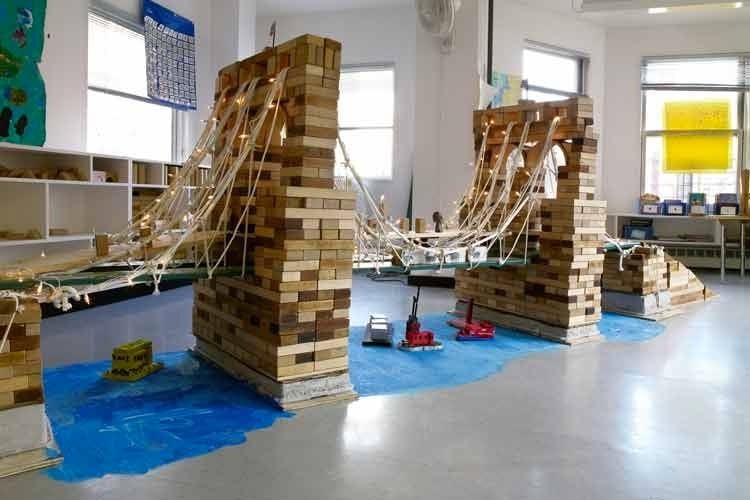The Design of Childhood

Design? Parenting? Playgrounds? iPads? Architecture? Toys? Probably Lego? Alexandra Lange’s upcoming book about “how children’s playthings and physical surroundings affect their development”, The Design of Childhood, is firmly in my wheelhouse.
Parents obsess over their children’s playdates, kindergarten curriculum, and every bump and bruise, but the toys, classrooms, playgrounds, and neighborhoods little ones engage with are just as important. These objects and spaces encode decades, even centuries of changing ideas about what makes for good child-rearing — and what does not. Do you choose wooden toys, or plastic, or, increasingly, digital? What do youngsters lose when seesaws are deemed too dangerous and slides are designed primarily for safety? How can the built environment help children cultivate self-reliance? In these debates, parents, educators, and kids themselves are often caught in the middle.
It’s out in early June, but you can preorder it on Amazon.
P.S. That photo is a model of the Brooklyn Bridge built by 7-year-olds at City & Country School in NYC made almost entirely out of unit blocks.
In the 7s, children engage in a formal study of the infrastructure and geography of New York City. Through extended block work, they explore the relationships among city systems of government, transportation, communications, commerce, and utilities. New issues continually arise: Who makes the laws, and how are they carried out? How does traffic flow? Where does water come from? The city study culminates with the building of a permanent city, complete with running water and electricity, and an historical study of the Brooklyn Bridge.
The blocks all have official names (like pillar, double unit, cylinder, etc.) but the kids have their own names for them based on the shapes: squarie, roundie, brickie, buttery (because it’s shaped like a stick of butter), half buttery, archie, rampie, cubie, longie, middlie, and so on. So for example, if you’re constructing a model of the Empire State Building, that might call for several longies, a few middlies & squaries as you get closer to the top, a buttery + half buttery for the spire, and then several strategically placed colorful cubies for the nighttime lights.





Stay Connected